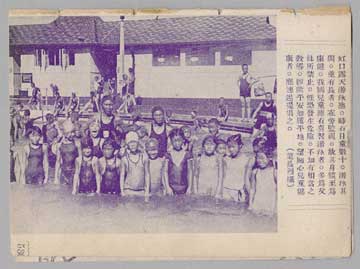|
Columbia's Starr East Asian Library's collection of the pre-communist era Chinese Women's Magazine Ling Lung, considered to be the world's most complete run outside of China, is now available via the World Wide Web.
Akin to America's Cosmopolitan or Red Book, the magazine published in Shanghai, China provides a unique snapshot of women's changing roles in Chinese society more than a half century ago. As described by its editors, the inexpensive, pocket-sized weekly encouraged women "to advance toward the good life through socially high-minded entertainment." Articles focused on fashion, interior decoration, pop psychology, and new careers. Advice columns on love, sex and marriage were regularly published as were profiles on local and Hollywood celebrities, even Shirley Temple. Publication of Ling Lungwas interrupted by the outbreak of war.
"Ling Lungwas a bit risqué for communist China," said C. V. Starr East Asian Library Chinese Studies librarian, Dr. Fran La Fleur. "But now, with the loosening of communist policies and due to the increasing internationalization of China, there is increased interest in women's studies. Ling Lung is a valuable resource, not only as a vehicle for understanding women's issues in pre-communist China, but also as a source of social history."
For years the journal brought researchers, in particular modern Chinese studies specialists, from around the world to Columbia. In addition to saving airfare for this select population, the digital Ling Lung has brought a once restricted resource to the general public's eye.
The irreplaceable Ling Lung collection, threatened by brittle, crumbling pages, the plague of time on its thin, acidic paper and years of researchers' use, was in need of preservation. Through the efforts of Columbia's C. V. Starr East Asian Library and Columbia University Libraries' Preservation Division, Columbia's near-complete run of the magazine was captured on micro-film providing a lasting copy and its color illustrations and photographs were scanned, yielding the true-color, digital version that is now available online.

|
|
|
Funding for the project included a grant from the United Board for Christian Higher Education in Asia, which is currently related to more than eighty colleges and universities engaging in library development, faculty training, and academic endeavors in teacher training, minority education, and women's education. In addition to access to the digital version, the C. V. Starr East Asian Library provided a micro-film of the Ling Lung collection for a number of Chinese universities and women's studies centers in China.
Pending additional funding, the C. V. Starr East Asian Library, noted among the five largest East Asian library collections outside of East Asia, will begin two additional digital preservation projects. A collection of very fragile Chinese folk religion paper gods from the 1920s printed in color on tissue-like paper is next to go online. Repair by the Preservation Division is currently underway. Microfilming will follow. In addition, a digital copy of select letters and calligraphy from the C.V. Starr East Asian Library's collections, featuring major Japanese writers, including Kawabata Yasunari and Oe Kenzaburo, Japan's two Nobel Laureates in literature will also be launched.
|
